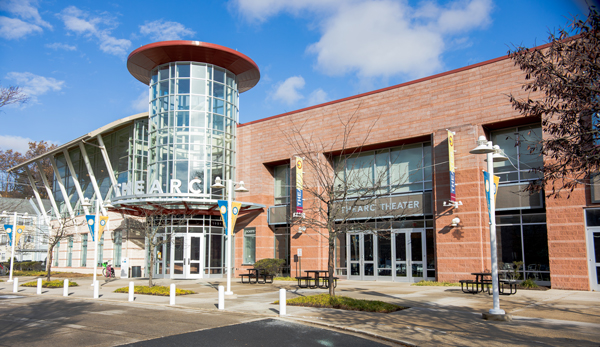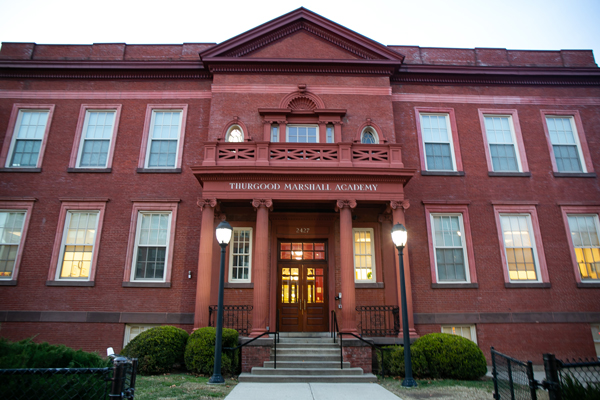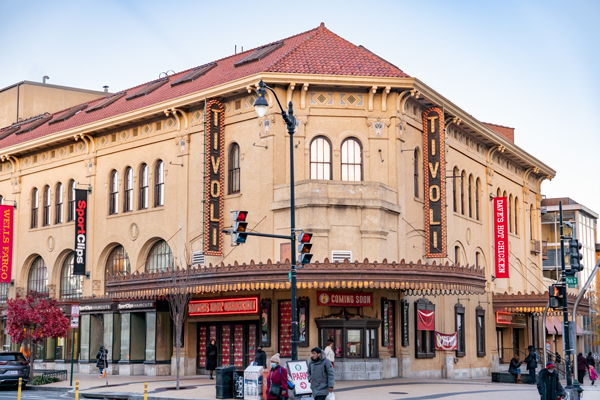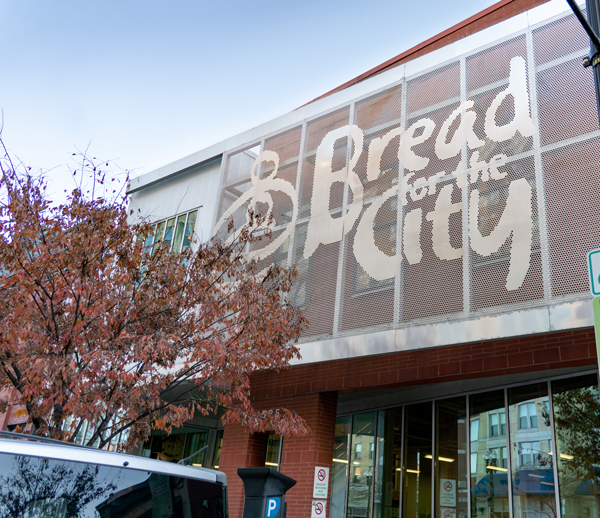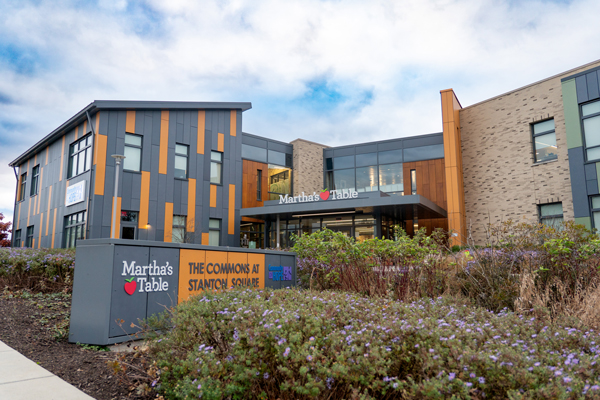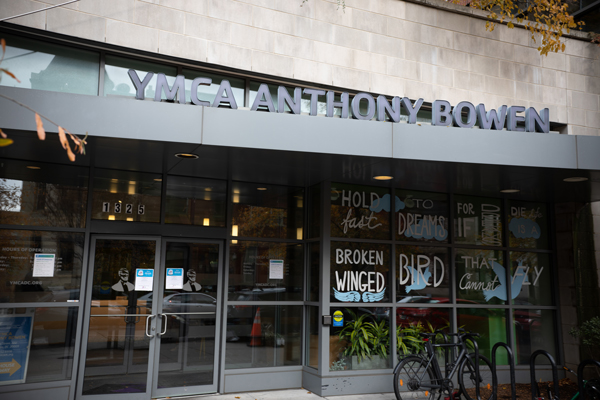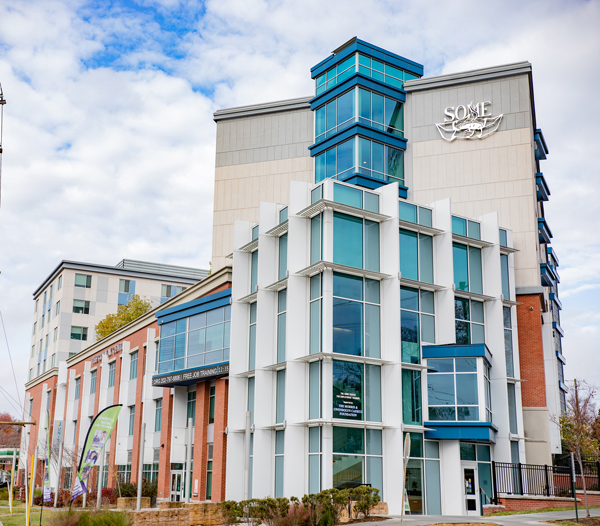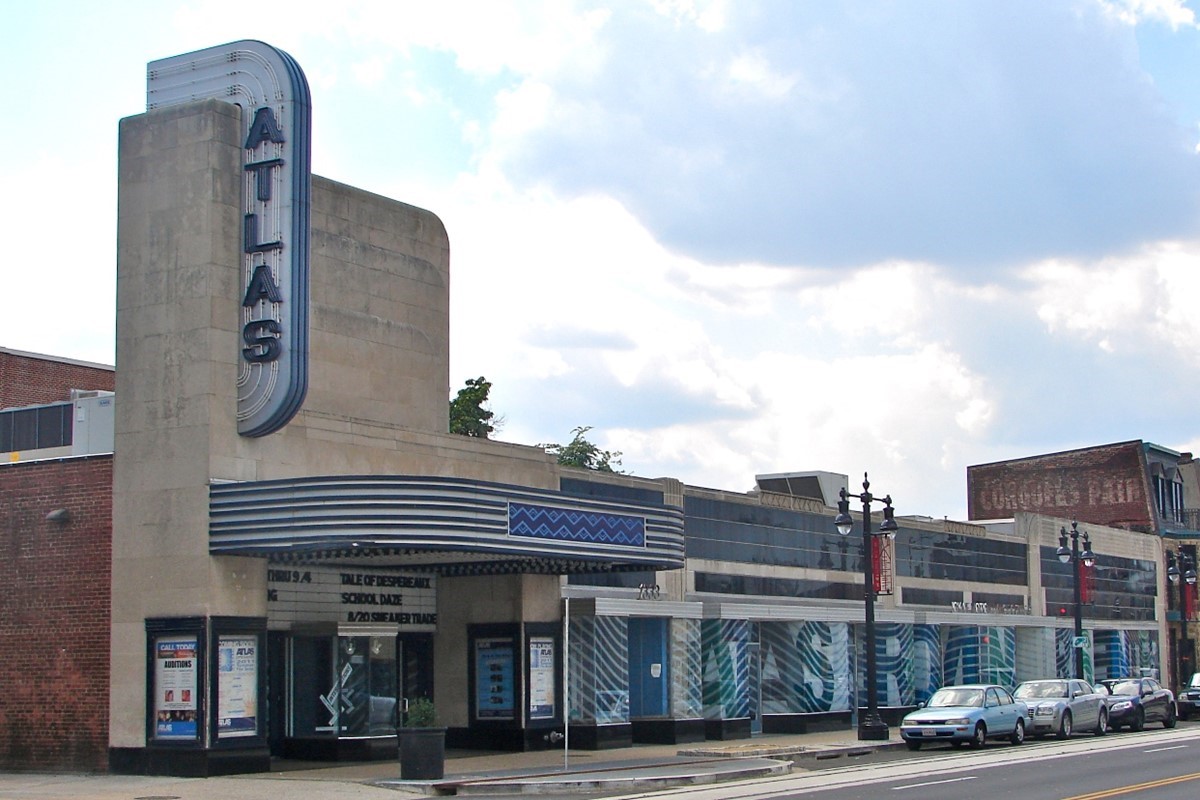Our Impact
Through the intentional provision of capital and with mission-aligned partnerships, City First serves low- and moderate-income urban communities in ways that are efficient and profitable, that increase access to credit and capital for individuals and institutions located therein, and that improve the economic health of the communities located therein.
As of December 31st, 2022, City First Bank has total assets of $1.2 billion, total loans of $768 million, total deposits of $687 million; and we deployed $304 million in capital with 69% in mission lending in 2022.
In 2021, we deployed $273 million in capital with 74% in mission lending.

-
$181 million
was lent in low-to-moderate income communities.
-
$173 million
in loans for affordable housing, creating or preserving 894 units of affordable housing.
-
$31 million
in loans to not for profits, supporting an additional 1306 community members served through community facility financing.
-
$26 million
in loans to small businesses, retaining or creating 531 jobs.
-
$65 million
in loans supported over 21 minority-owned or -led organizations$61 million
in loans supported over 19 African American-owned or -led organizations.
-
$5 million
in green lending to 4 projects in and for the low-income communities we serve.
-
All numbers for mission impact for new lending in 2022.
Our Stories
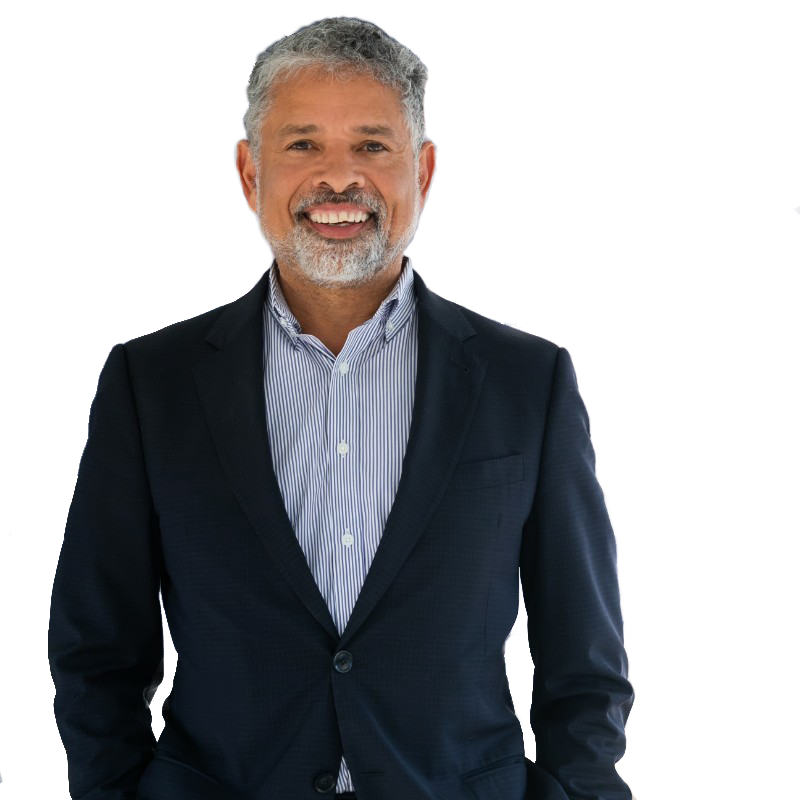
“That need for creativity opened the door for partnerships with CityFirst Bank… At The Heights, we’ve debuted an exercise studio owned by an African-American entrepreneur, a salsa studio, and a prosthetics company that serves wounded warriors.”
Adrian Washington
Founder,
Neighborhood Development Corporation
Impact Gallery
-
Close
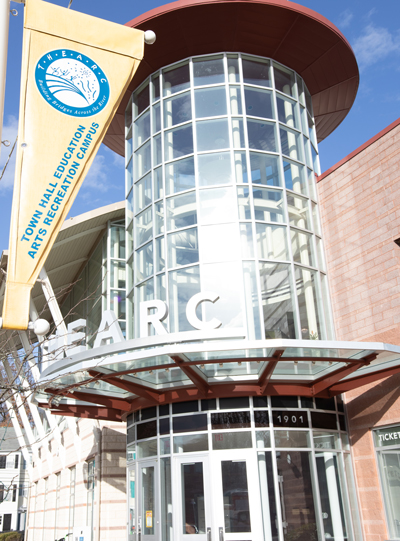
Town Hall Education, Arts & Recreation Campus (THEARC)
Once home to plantations, a steelworks, ordinance manufacturers, and later the St. Elizabeth’s Hospital, the Congress Heights community has changed over time. Congress Heights is a town built on land bought by slaves who purchased their own freedom, has seen successive waves of European immigrants, and is also home to the oldest Jewish cemetery in DC. In recent years, the Department of Homeland Security, and a professional sports and entertainment venue have come to the area. A $200 million mixed-use hotel, office, and residential property is planned adjacent to the Congress Heights Metro Station. However, as the flurry of redevelopment continues, the needs of low-income residents of the community are not always met. City First responded to this reality by contributing a $20 million in New Markets Tax Credit (NMTC) allocation to the THEARC over 2 phases. Located at 1901 Mississippi Avenue, Southeast, THEARC is a 200,000 square-foot arts, education and recreational facility open to the public. Since opening in 2005, THEARC has served thousands of residents of Southeast DC, offering dance classes, music instruction, fine arts, academics, continuing education, mentoring, tutoring, recreation, medical and dental care, and other services at a substantially reduced cost, or no cost at all. Nonprofit tenants include: Children’s Hospital, Washington Ballet, Levine School of Music, Washington School for Girls and Bishop Walker School for Boys, Corcoran School of Art, to name a few.
-
Close

Thurgood Marshall Academy
Nestled on Martin Luther King, Jr. Avenue, in Anacostia, a word that loosely translates to “village trading center” and a neighborhood that acknowledges the Anacostan (Nacochtank) Native Americans, the Thurgood Marshall Academy is a reminder that justice endures. Now a predominantly African American residential neighborhood and commercial corridor, residents have withstood decades of disinvestment, and governmental neglect, drawing strength from black civic and business leaders like Frederick Douglass. In the last several years, regional real estate investors vying for increasingly scarce land in DC, have begun deploying money to Anacostia. The resulting increase in land values has driven up rents, and property taxes threaten to displace local residents and businesses. The multigenerational accumulation of interrelated disadvantages often manifests in poor academic performance in children and lower educational attainment in adults. CityFirst responded to this reality by providing a $14 million New Markets Tax Credit allocation to the Thurgood Marshall Academy Public Charter School Educational Facility at 2427 MLK Avenue. As a minority partner in this project with the Charter School Development Corporation, CityFirst arranged funding to add to DC government bonds to finance the acquisition and renovation of this historic building. Thurgood Marshall is designated a Tier 1 school by the DC Public Charter School Board, serving 320 high school students, 90% of whom are from Wards 7 and 8. Offering a legal training college preparatory curriculum, Thurgood Marshall Academy is one of only six public charter high schools to earn the Tier 1 designation. The school reports 100% of those applying to college upon graduation are accepted. Approximately 95% enroll immediately after graduation, and 90% of students stay in college beyond the first year.
-
Close
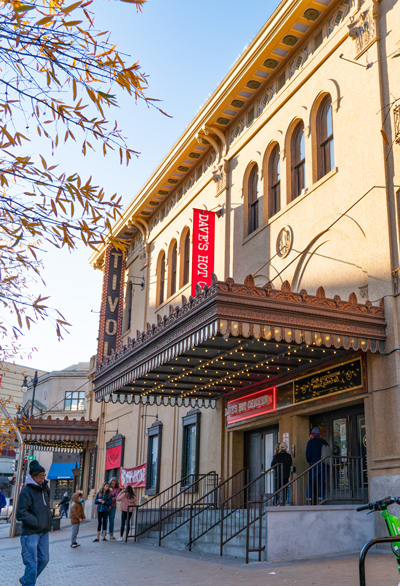
The Tivoli Theatre
Originally named for Columbian College (now George Washington University), Columbia Heights was once a horse track and farmland. In the late 19th century, Columbia Heights transformed into an upscale suburban neighborhood, which was home to federal workers and military officers. By 1904, the federal government had purchased land to develop Meridian Hill Park, and four streetcar lines connected this community to downtown. By the early 20th century, the community transformed again with the construction of multi-family apartment buildings. The area’s increased density supported the founding of The Tivoli Theatre in 1924 to meet the entertainment needs of this growing neighborhood. African Americans began moving to Columbia Heights from the adjacent U Street and Shaw neighborhoods during this period. The legendary Duke Ellington called Columbia Heights home in the 1920s. Although spared direct damage, The Tivoli Theatre fell into disrepair as the surrounding neighborhood deteriorated after the 1968 riots. The Tivoli closed in 1976 and only reopened in 2005 after a five-year renovation. It was redeveloped as a mixed-use property featuring retail, office and performance art spaces. CityFirst’s support of $14.4 million was critical to the reemergence of this cultural and commercial hub in Columbia Heights.
-
Close
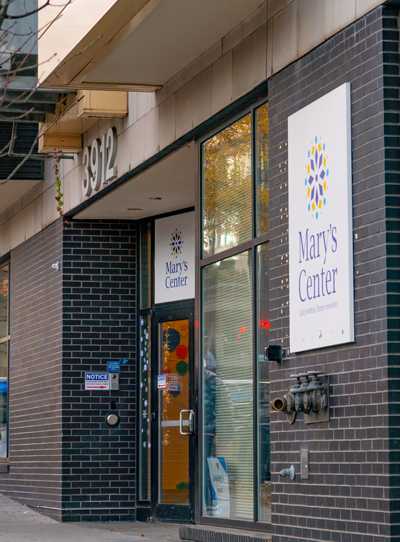
Mary's Center
The changing physical and human landscape of DC’s neighborhoods is not unusual, but the story of Petworth exemplifies negative effects of gentrification like the involuntary displacement of residents. Bordered by Rock Creek Park on the West, Petworth has seen a massive population change in the last 30 years. While the population of Petworth rose by only about 500 from 1990 to 2016, the black population decreased from 88% to 53%. This shift is in part due to a transformational $643 million investment by WMATA in 1999, which created two new Metro stations better connecting Petworth with the rest of DC. While this investment revitalized the community from a purely economic perspective, in the process, it subjected thousands of low income residents to housing insecurity. This housing insecurity can force families to choose between paying for medical care or paying rent. Mary's Center for Maternal and Child Care, a Federally Qualified Health Center, has provided affordable medical care to uninsured and underinsured residents, along with educational and social services, since 1988. Ninety percent of Mary's Center patients are under the federal poverty level and approximately 30% have no medical insurance coverage at all. CityFirst provided $20 million in NMTC financing to Mary's Center to construct a new, state-of-the-art medical clinic in Petworth. This capital allowed Mary's Center to renovate its existing medical clinic at 2333 Ontario Road, NW, and construct a new 26,000 square foot facility at 3912 Georgia Avenue, NW.
-
Close

Bread for the City
Since 1976, Bread for the City (Bread) has served homeless, indigent and impoverished families in DC’s Shaw neighborhood, which was devastated for decades after the 1968 riots. Bread’s Shaw center supports over 2,500 clients monthly with food, clothing, medical and dental care, legal services and case management. In 2009, when it had outgrown its building, CityFirst originated a $6.4 million loan using the New Markets Tax Credit program to help Bread renovate and double the size of its Shaw facility. The expansion doubled their overall service capacity and nearly tripled their capacity to provide primary health care to uninsured and underinsured DC residents. As demand for services increased beyond capacity at their southeast center in Anacostia, CityFirst partnered with Bread once again to finance a new and expanded southeast service center. CityFirst provided an $11 million conventional loan and partnered with the DC Housing Authority to provide a $24.3 million NMTC allocation to Bread for the City to support their new Anacostia service center. The new 30,000 square foot community facility will be home to a brand new medical, dental, vision, and behavioral health clinic that will serve approximately 5,000 to 6,000 new patients per year. Additionally, the new center will feature expanded food and clothing distribution centers, legal and social service offices, and a jobs center to address chronic unemployment.
-
Close
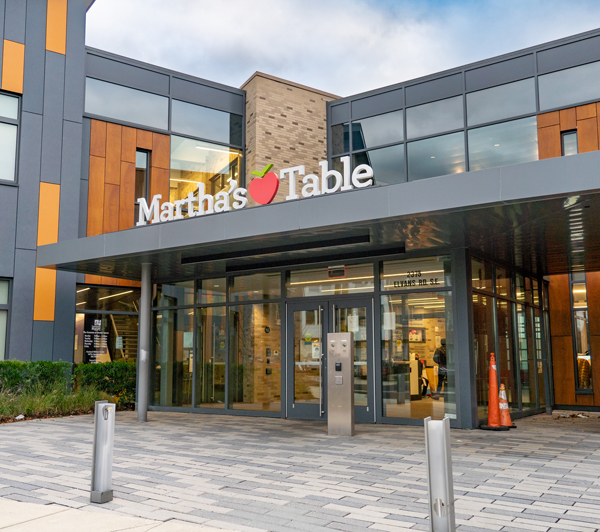
Martha's Table
Barry Farm is today known for the 432 dilapidated housing units built in 1943 by the National Capital Housing Administration. However, the African American community traces its history to 1867 when the Freedmen’s Bureau acquired 375 acres of land in Southeast DC. This land was divided into smaller plots and purchased by African-Americans over time. A railroad line built in 1913 created a physical and social barrier separating Barry Farm and the surrounding community from much of DC. The construction of the Suitland Parkway in the 1950s further isolated these communities. These geographic barriers reinforced political disenfranchisement and social isolation resulting in housing, health, wealth and education disparities which persist to this day. To help address these disparities, CityFirst provided $12 Million in NMTC financing to support the new construction and relocation of the Martha's Table headquarters from Ward 2 to Ward 8. Located at 2375 Elvans Road,SE, less than a mile from Barry Farm, Martha's Table’s new headquarters anchors a 54,000 SF non-profit community service campus at the Commons at Stanton Square that will enable a near 40% increase in the number of clients served. The Commons houses Martha's Table’s successful food, education and community support programs along with other critical services provided by Community of Hope and other non-profit partners.
-
Close
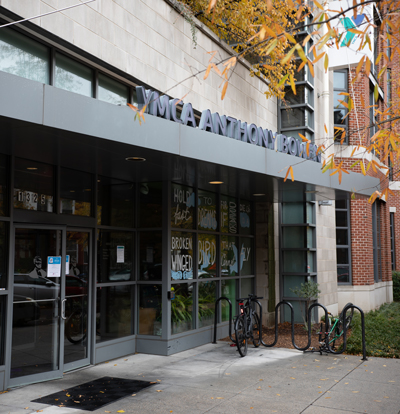
YMCA Anthony Bowen
During the late 19th and early 20th centuries, the Anthony Bowen Y, founded in 1853 and originally built in 1912, anchored DC’s historically prosperous black U Street corridor. Anthony Bowen, the Y’s founder and namesake, purchased his family’s freedom in 1830. His vision created a space which nurtured the greatness of Dr. Charles Drew; housed Langston Hughes while a busboy; and harbored Supreme Court Justice Thurgood Marshall while he mapped out Brown vs. Board of Education. “this Y survive[d] decades of civil unrest, economic hardship, and racial conflict, [and] continues to serve as a metropolis for AfricanAmerican intellectual and cultural life” Angie L. Reese-Hawkins, President & CEO of the YMCA of Metropolitan Washington. “After 70 years at its original location, the Y moved four blocks to a facility better suited to the needs of the community, reopening in 1988 at 1325 W Street, NW.” In 2013, the dilapidated W Street facility was redeveloped, keeping the intentionality of its original design and purpose. City First Bank facilitated $24 million in financing to redevelop the Y into a modern, mixed-use facility. Serving as anchor to a 170 unit apartment building with underground parking and retail, the A. Bowen YMCA offers a full-service fitness and wellness center, child-care facility, indoor swimming pool, Internet café, and a rooftop terrace. CityFirst’s contribution enables the Y to provide subsidized and fee-free services for low and moderate income families that live along the U Street corridor.
-
Close
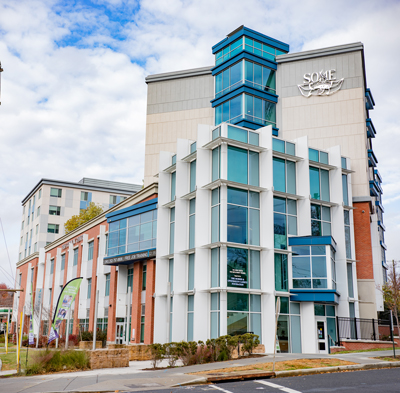
So Others Might Eat (SOME)
The Marshall Heights community, located in the far eastern corner of the nation’s capital in Ward 7, began as an informal “shantytown” settlement of African Americans because it was one of the few areas in the city that did not have housing covenants excluding blacks from owning property. The area was marketed to poor African Americans fleeing the deep south. The City was negligent to provide the community with basic infrastructure. Access to the city sewer system and public water supply lines were not installed until the late 1950s. This governmental neglect and lack of physical infrastructure, coupled with other debilitating local and national policies, stunted the economic growth and advancement of this African American community. Over the years, organizations like the Marshall Heights Community Development Organization have stepped up in an effort to provide the community with the supportive services it needs to thrive. More recently, SOME, a premier interfaith, community-based service organization, expanded its reach into the Marshall Heights community. City First provided SOME with a $10 million allocation to support the construction of the Conway Center near the intersection of Benning Rd and East Capitol St, NE. The Conway Center is a major mixed-use development in Ward 7 consisting of 202 units of affordable supportive housing, a premier workforce development program for community residents, a 36,000 square-foot medical and dental clinic operated by Unity Health Care, and new administrative offices for SOME.
-
Close
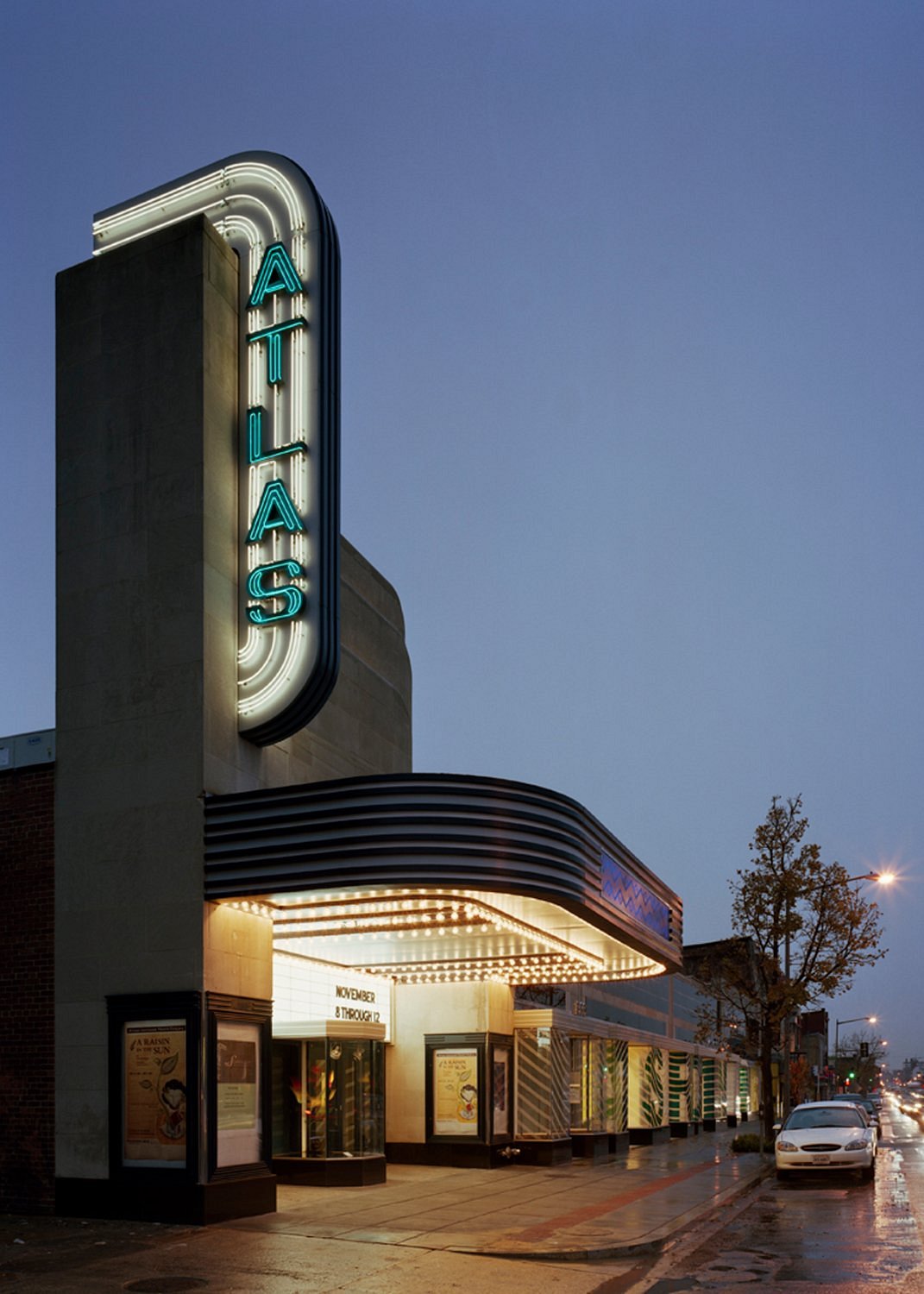
The Atlas Performing Arts Center
Washington, DC’s H Street in Northeast was a thriving commercial corridor from 1849 until the 1968 riots. After decades of decline, City First partnered with a local visionary, Jane Lang, to redevelop the historic Atlas Theatre catalyzing the resurgence of the H Street community’s cultural and economic potency. The Atlas Performing Arts Center became the engine for transforming the H Street corridor. With its mission of community development, City First Bank became a stakeholder in the vision, contributing $19.9 million. “City First came in at an early point, but at a prudent point, where it looked like things were going to come together to create a vibrant community. They were the critical element at a critical moment,” explains Lang. The investment in the iconic art space was a bellwether for other investors along the corridor which is now experiencing a renaissance. “What I think it did was create an environment in which people could believe in the future,” says Lang. The city government has responded to the economic and cultural vitality returning to this once thriving community by reestablishing a streetcar system. The former system operated from 1872 to 1949, bringing shoppers to DC’s first Sears and other department stores. While the streetcars have returned to H Street, the role of The Atlas Performing Arts Center illustrates that more than just infrastructure investments are required to lift up distressed neighborhoods.


